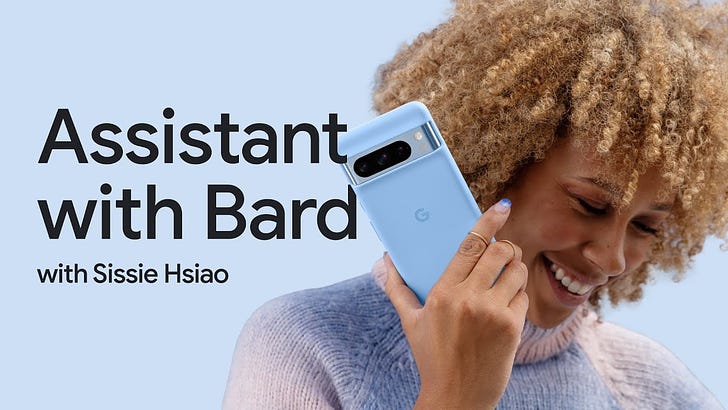To Charge or Not to Charge for Generative AI Features - Different Approaches Emerge
Microsoft and Google charge, Adobe, Intuit, Zoom, Canva, and others do not
How much does it cost users when a generative AI feature lands in your everyday business application? That depends.
Microsoft 365 Copilot is an extra $30 per month per user on top of the existing 365 subscription cost. Google Duet AI (the Copilot for Google Workspace) is also $30 per month per user in addition to the base service cost. ChatGPT Enterprise is $60 per user per month.
Google Bard, Anthropic’s Claude 2, and OpenAI’s ChatGPT are free. However, Claude 2 Pro is $20 per user per month for more generous usage limits, and ChatGPT Plus is a similar price for additional features that are unavailable to free users.
Bing Chat and Google Search Generative Experience (SGE) are free. Perplexity has a free offering and a $20 per user per month Pro version with additional features.
Bing Create, the DALL-E via Microsoft Bing text-to-image service. However, DALL-E through OpenAI is only free for about 50 credits to start and 15 per month. Otherwise, you will pay about $0.02 per image. Midjourney charges between $10 and $120 per user per month after a 25-image generation trial period.
Adobe recently announced Firefly. It is free for free users, though at a limited use. Beyond the monthly free quota, users can pay for additional access. It is also available at no additional cost for paying users through Creative Cloud, with some limits that appear to be generous. The Finacial Times reported (N.B. paywall):
Ely Greenfield, chief technology officer at Adobe, said not charging extra for generative AI was the best way to get the technology “into as many of our customers’ hands as possible”.
Adobe later said that in November it would increase the price of a number of its most widely used subscription services by about 10 per cent. That rise, however, reflected features included over the past 18 months rather than specifically the addition of generative AI, it said.
…
Some companies claimed the new forms of AI would have other benefits. Adobe’s trial of its image-generating AI showed that it increased customer retention and encouraged more people to try its services, Greenfield said.
The Economics of Generative AI
Consumers have become accustomed to “free” or “freemium” products. However, those products generally carried very little incremental cost or operational overhead for the product providers. That is not true for generative AI. Each query carries a material cost, and scaling introduces additional complexity.
The costs are not just for training. It is well known that training AI foundation models can be extremely expensive. However, it is also far more expensive to run inference (i.e., answer a query) using a generative AI model than to perform a simple database call. This creates a significant incentive for application providers to charge for use, and some do so successfully today. ChatGPT and Midjourney may be the two best examples.
When it comes to business applications, users expect to pay for access but don’t necessarily expect new features to add cost. Microsoft and Google are charging users for access to generative AI features in their business productivity software suites. Zoom has some generative AI features that are included with base package prices and another that users must pay for.
Adobe Firefly, Canva, Mailchimp, Notion, Wix, and other software providers are offering generative AI features for no additional cost. There is no standard and consumer expectations are not set.
Three Different Markets
Synthedia recognizes three different generative AI product market categories are emerging. These include:
Generative AI powered applications offered by specialists - These are applications where generative AI is central to the functionality, and indeed, the product would not exist without the technology. These will be the easiest to charge for, provided they offer strong benefits. Examples: ChatGPT, Midjourney.
Generative AI powered applications offered by platform providers - These are also applications where generative AI is central to the functionality, but the company has many other revenue sources and can offer the product for free or as a paid service. These will also be the second easiest to charge for, but it may be difficult to significantly raise the price when bundled in with existing products. Examples: Bing Chat, Google SGE, Google Bard, Microsoft Copilot, Duet AI.
Applications with generative AI powered features - These applications existed before generative AI but have recently added features leveraging the technology. This will be the hardest application category to charge extra for generative AI features. For a user to accept the additional cost, they must believe the features are both worth the extra cost and using them within the application is preferable to a generative AI powered application. Examples: Canva, Adobe Firefly, Zoom.
The “willingness-to-pay” for generative AI by both consumers and enterprises is noteworthy. That is a clear market signal that the generative AI capabilities add enough value for users to part with their money. However, just because ChatGPT Enterprise, ChatGPT Plus, Midjourney, and a few other solutions have successfully converted paid users, doesn’t mean anyone else can do so at a meaningful scale.
Most application providers that are adding generative AI features were doing so initially to avoid being surpassed by competitors and potentially creating a new source of revenue. The competitive pressure among application categories suggests generative AI adoption will be employed primarily to maintain or grow user loyalty. As all of those companies’ competitors also add generative AI features, it will become the expected baseline functionality. This will make it harder to charge for the features unless they are far better than competitors’ AND than alternative options.
So, should you charge or not charge for generative AI applications or features? Your business model has probably decided that for you.






Bret, great article. How many ISV are their 10,000? 20,000? I suspect 80% have or are in the process of implementing an LLM. Do you have a sense of which Foundational Model most are using? (I assume 90% are using OpenAI due to time to market and API availability, but this is only a guess)